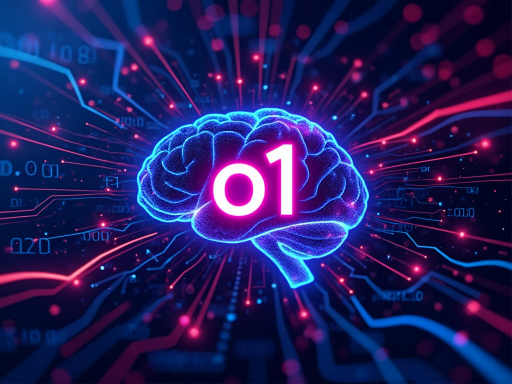
Artificial intelligence is evolving at an unprecedented pace. OpenAI has unveiled its latest innovation: OpenAI o1. This new language model is set to revolutionize the way we interact with technology. In this comprehensive article, we’ll delve deep into the features, applications, and implications of OpenAI o1.
Introduction to OpenAI o1
OpenAI has consistently pushed the boundaries of artificial intelligence. With the introduction of o1, they have taken a monumental step forward. This language model is designed to understand and generate human-like text with unparalleled accuracy.
OpenAI o1 is not just an incremental improvement. It represents a paradigm shift in natural language processing. This model is capable of understanding context, nuance, and intent better than any of its predecessors.
The Evolution of Language Models
Language models have come a long way since their inception. Early models struggled with basic grammar and coherence. Over time, advancements like GPT-3 and GPT-4 set new standards.
OpenAI o1 builds upon this legacy. It incorporates lessons learned from previous models. The result is a language model that is both powerful and versatile.
Key Features of OpenAI o1
OpenAI o1 boasts several groundbreaking features:
Advanced Contextual Understanding
The model excels at grasping context. It can maintain coherence over long passages. This ability makes interactions more natural.
Multilingual Proficiency
OpenAI o1 supports multiple languages. This feature opens doors to global communication.
Ethical AI Integration
OpenAI has embedded ethical guidelines into o1. The model actively avoids generating harmful content.
Customizable Outputs
Users can fine-tune outputs to suit specific needs. This flexibility enhances the model’s utility across domains.
How OpenAI o1 Transforms Industries
The impact of o1 spans multiple sectors:
Healthcare
In healthcare, o1 can analyze patient data. It assists in diagnosing conditions and proposing treatments.
Finance
The model can process vast amounts of financial data. It aids in detecting fraud and predicting market trends.
Education
OpenAI o1 personalizes learning experiences. It adapts content to match individual student needs.
Customer Service
Businesses utilize the model for customer interactions. It enhances response times and improves satisfaction.
Ethical Considerations and AI Safety
OpenAI places great emphasis on ethics:
Bias Mitigation
o1 includes mechanisms to reduce bias. This ensures fair and equitable interactions.
Transparency
OpenAI provides insights into how the model works. Users understand the reasoning behind outputs.
User Control
Users have control over the model’s behavior. This feature prevents misuse and unintended consequences.
Comparing OpenAI o1 with Previous Models
o1 surpasses earlier models in several ways:
Enhanced Performance
The model delivers faster and more accurate results. It handles complex tasks with ease.
Improved Learning Capabilities
It learns from fewer examples. This efficiency accelerates development cycles.
Greater Scalability
o1 scales across different platforms. It integrates seamlessly with existing systems.
Technical Architecture of OpenAI o1
Understanding the architecture provides insights into its capabilities:
Neural Network Enhancements
The model utilizes advanced neural networks. These networks mimic human brain functions more closely.
Data Processing Techniques
It employs sophisticated data processing methods. This approach improves comprehension and generation.
Computational Efficiency
o1 optimizes resource usage. This efficiency reduces operational costs.
Real-world Applications of OpenAI o1
Practical applications demonstrate the model’s versatility:
Content Creation
Writers use o1 for generating ideas. It assists in drafting articles, scripts, and books.
Legal Assistance
Law firms leverage the model for document analysis. It streamlines research and case preparation.
Scientific Research
Researchers employ o1 for data analysis. It accelerates discoveries and innovation.
Challenges and Limitations
No model is without flaws:
Data Privacy Concerns
Handling sensitive data requires caution. OpenAI addresses this with stringent security measures.
Overreliance on AI
Dependence on AI can reduce human oversight. Balancing automation with human input is crucial.
Misinterpretation Risks
The model may misinterpret ambiguous queries. Clear communication minimizes errors.
The Future of AI with OpenAI o1
The introduction of o1 paves the way for future advancements:
Enhanced Human-AI Collaboration
The model fosters better collaboration. Humans and AI work together more effectively.
New Business Opportunities
Entrepreneurs can build innovative solutions. o1 serves as a foundation for startups.
Continuous Learning
OpenAI commits to ongoing development. Future iterations will further expand capabilities.
Conclusion
OpenAI o1 marks a significant milestone in artificial intelligence. Its advanced features and ethical design set it apart. By embracing o1, we unlock new possibilities across industries. The future of AI is here, and it’s more exciting than ever.
References
- OpenAI Official Website
- AI in Healthcare – Harvard Business Review
- AI in Finance – Forbes
- AI in Education – EdTech Magazine
- OpenAI’s Commitment to Transparency
- Understanding Neural Networks – MIT Technology Review
- AI in Law – The National Law Review
- AI Startups – TechCrunch






